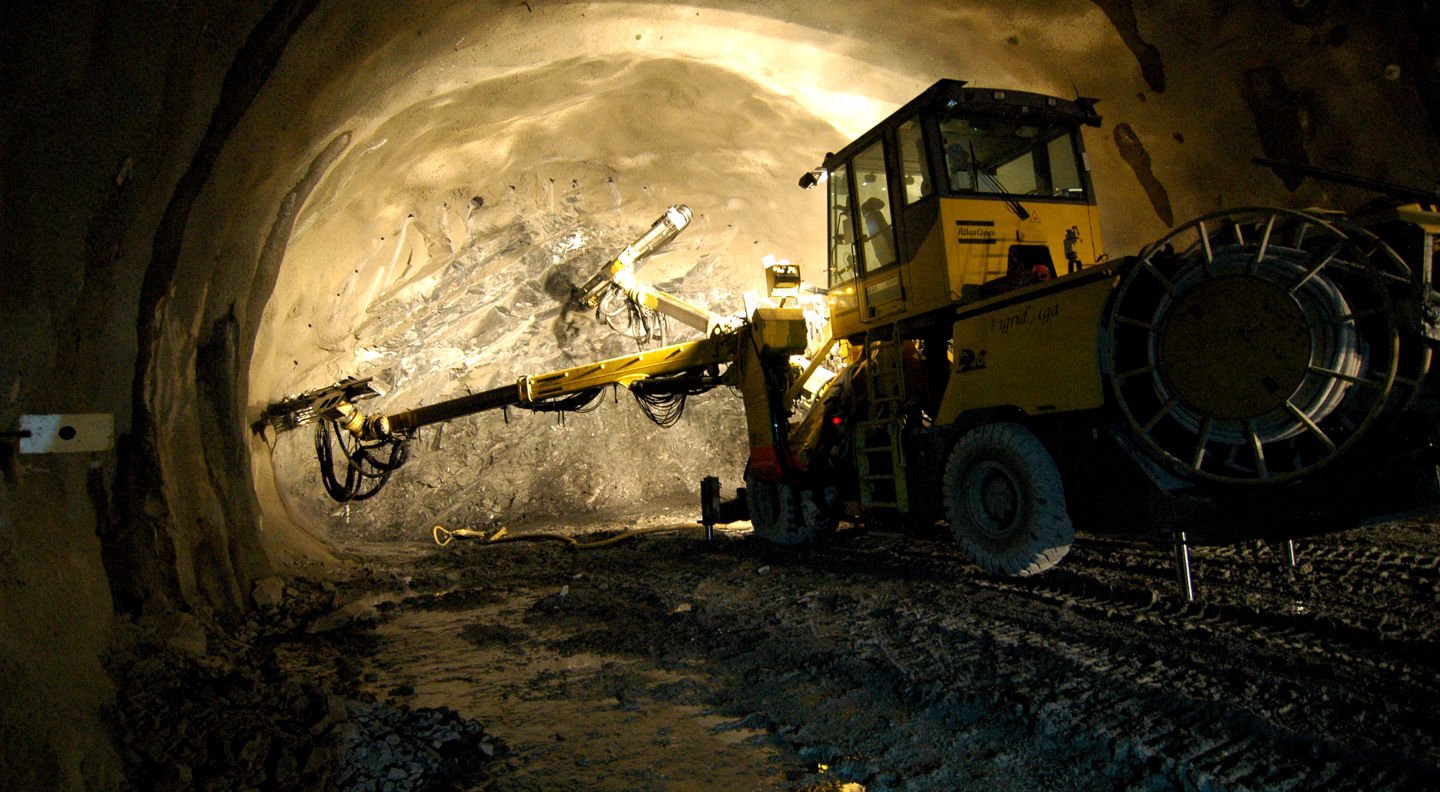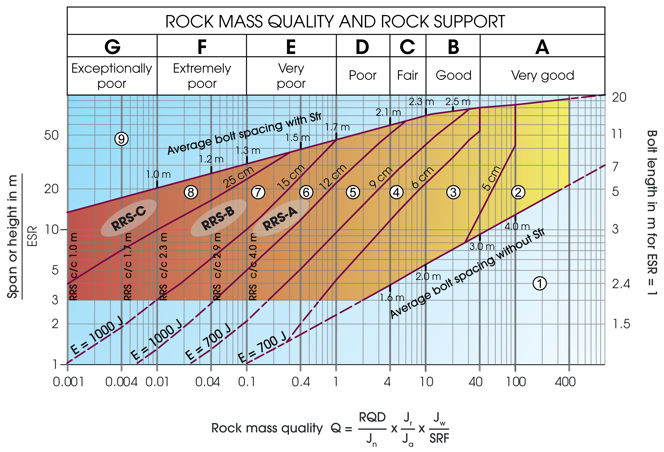Tunnels and the Q-system

The Q system is a classification system for rock masses with respect to the stability of tunnels and rock spaces. The Q-system was initially developed at NGI and is used extensively in Norway and internationally.
The first edition was published in 1974, and over the years, the system has been updated several times to include modern security technology. NGI has prepared a guide for using the Q system, updated and summarized in a usable format. This update has been prepared and published with the support of the Norwegian Road Administration.
The guide is available both as an app and in PDF format.

Permanent support recommendations based on Q-values and span/ESR
The Q system - a brief introduction
A stated Q-value depends on the rock quality and the geometry of the rock space, and is thus not an independent characteristic of the rock mass. The Q value in an undisturbed rock mass (where no tunnel or rock space has been constructed) can differ. Based on specified Q values for the rock masses, the need for stability protection in tunnels and rock spaces can be assessed in the planning and construction phases.
The Q system is widely used both in Norway and internationally. The method was developed at NGI; the first edition was published by N. Barton et al. (1974). The method has been updated several times to include modern security technology (E. Grimstad and N. Barton, 1993). In 2002, the Q system was updated with sprayed reinforced arches and energy absorption in addition to adaptation in line with the security level of recent years. This latest update in 2013 was published with the support of the Norwegian Public Roads Administration.
In 1999, a Q-system (QTBM) specially adapted to TBM drilling in tunnels was published (N. Barton, 1999). This is a method for assessing penetration rate (PR) and drift (AR) in TBM drilling, which is based on a comprehensive Q system and an average feed force (force per cutter) in relation to assumed rock mass strength.
The safety diagram is built based on experience data, including over 2,000 examples from existing tunnels and rock spaces in Norway, Switzerland, and India. The parameter values in the Q value with descriptions are set up in tables and can be determined by mapping the field/underground facilities and core logging.
Decisive for the amount of protection in a tunnel is the rock quality (Q-value), span, and safety requirements for the facility concerning what the facility will be used for (ESR, Excavation Support Ratio, expresses safety requirements). The fuse diagram shows the connection between these, and various fields correspond to a specific type of fuse.

Karl Gunnar Holter
Expert Adviser Environment and Rock Engineering karl.gunnar.holter@ngi.no+47 418 60 049
